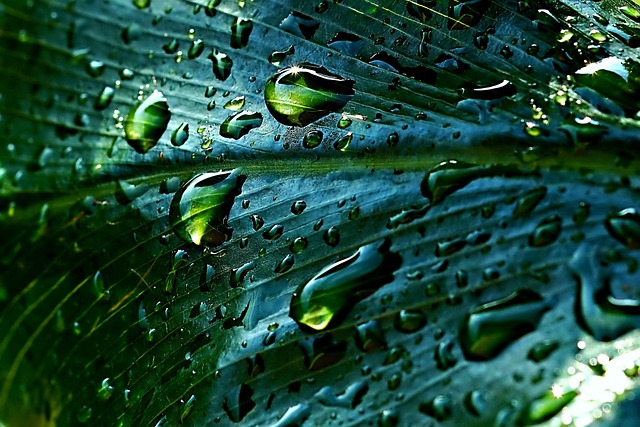In regions where the soil has become depleted, the ground can no longer support vegetation, and water is scarce, the threat of desertification looms large. Climate change amplifies these challenges, reducing rainfall frequency and intensity while increasing evapotranspiration. Amid these harsh conditions, one solution rises from the ground itself: rainwater collection. By harvesting the rain that does fall, communities can secure a reliable water source, mitigate land degradation, and foster ecological resilience.
Understanding the Mechanics of Rainwater Collection
Rainwater collection systems are deceptively simple in design yet powerful in impact. They rely on three fundamental steps: capture, conveyance, and storage. First, a catchment surface—such as a roof, concrete slab, or specially designed basin—gathers precipitation. The captured water then flows through gutters or channels, often filtered to remove debris, and is directed into storage tanks or underground cisterns. Finally, the stored water can be used for irrigation, livestock, or household needs.
Effective systems must account for local climatic patterns. In areas with highly variable rainfall, larger storage volumes are necessary to buffer dry periods. In regions where rainfall is abundant but erratic, multiple smaller storage units distributed across a community can reduce the risk of catastrophic loss.
Designing for Desertified Landscapes
Desertified soils tend to have poor infiltration rates and limited organic matter. When designing a rainwater collection system, it is crucial to incorporate measures that enhance soil health. For example, using permeable paving materials or shallow trenches can increase the infiltration of collected water, allowing it to recharge shallow aquifers and sustain the root zones of crops.
“When rainwater is captured, the real benefit lies not in the quantity of water stored but in how it is returned to the land,” says Dr. Amina Khaled, a hydrologist working with arid-region communities.
Another consideration is the integration of mulching and ground cover vegetation around storage sites. These practices reduce evaporation, further conserving water and enhancing soil structure.
Case Studies: Rainwater Collection in Action
Across the Sahel, the Green Belt Movement has implemented low-cost rainwater harvesting systems that have doubled crop yields in drought-prone villages. Each household now receives a 500‑liter storage tank, and communal irrigation channels feed local farms during the dry season.
In the Middle East, the Jordan River Basin has adopted rooftop harvesting on public buildings. The collected water is treated minimally and used for flushing toilets and landscaping, relieving pressure on groundwater extraction.
Economic and Social Implications
Beyond the environmental benefits, rainwater collection has tangible economic advantages. Farmers can invest savings from reduced irrigation costs into diversifying crops, while households experience lower expenses for water transport.
- Job Creation: Installation and maintenance of rainwater systems generate local employment opportunities, especially for skilled carpenters and engineers.
- Community Cohesion: Shared water infrastructure encourages cooperation, reducing conflicts over scarce resources.
Challenges and Mitigation Strategies
While rainwater collection offers a promising avenue, several challenges must be addressed:
- Water Quality: Collected rain can carry pollutants from roofs or surrounding environments. Regular cleaning and filtration systems mitigate health risks.
- Leakage: Improperly sealed tanks may lose significant volumes. Using durable, high-quality materials and periodic inspections reduces losses.
- Initial Investment: Although costs are relatively low, upfront capital can be a barrier. Microfinance schemes and government subsidies can bridge this gap.
Policy Frameworks Supporting Rainwater Harvesting
Governments can play a pivotal role by integrating rainwater collection into national water management strategies. Policies might include:
- Regulatory incentives for incorporating rooftop harvesting into building codes.
- Tax breaks for households and businesses that invest in storage infrastructure.
- Public-private partnerships that facilitate technology transfer to remote communities.
By aligning policy with on-the-ground practices, the cumulative effect of rainwater collection can be maximized, leading to measurable reductions in desertification rates.
Future Directions: Innovation and Sustainability
Advancements in materials science are paving the way for more efficient rainwater harvesting. Transparent solar‑powered pumps can move water from tanks to irrigation fields without electricity grids, while nanofiber filters remove micro‑pollutants, ensuring potable water quality.
Additionally, integrating digital monitoring—such as IoT sensors that track tank levels and rainfall—enables data-driven decision making, allowing farmers to adjust irrigation schedules dynamically.
Conclusion: A Resilient Path Forward
Rainwater collection stands as a versatile tool against desertification, marrying environmental stewardship with socio-economic benefits. Its simplicity makes it accessible, while its adaptability ensures relevance across diverse landscapes. As climate change continues to alter precipitation patterns, investing in robust rainwater harvesting infrastructure becomes not just an option but a necessity for sustaining life in vulnerable regions.


